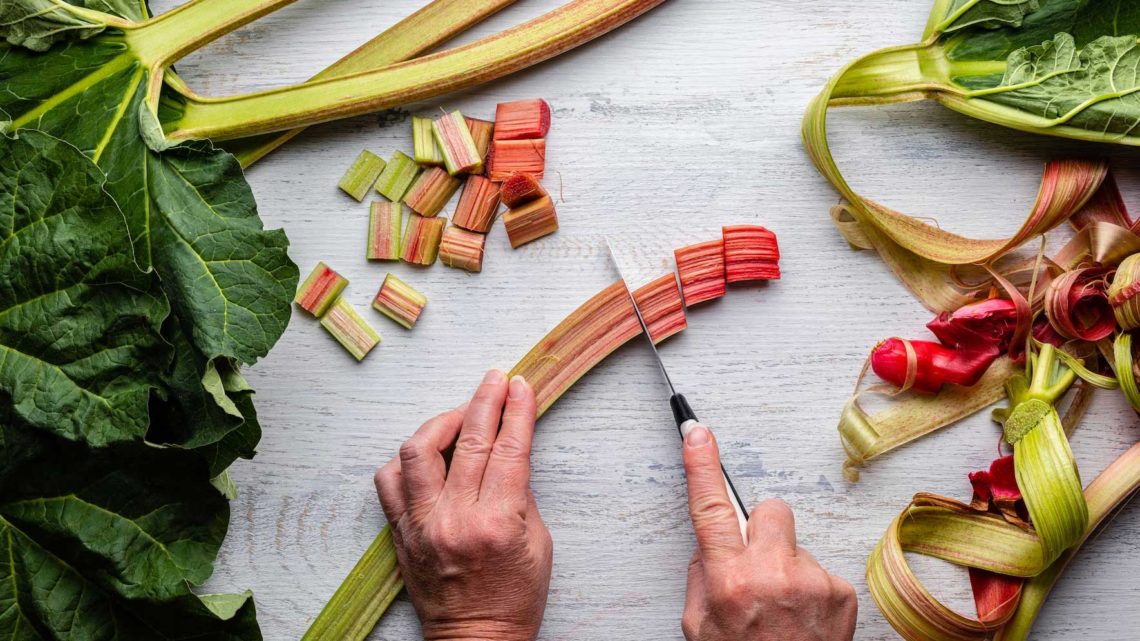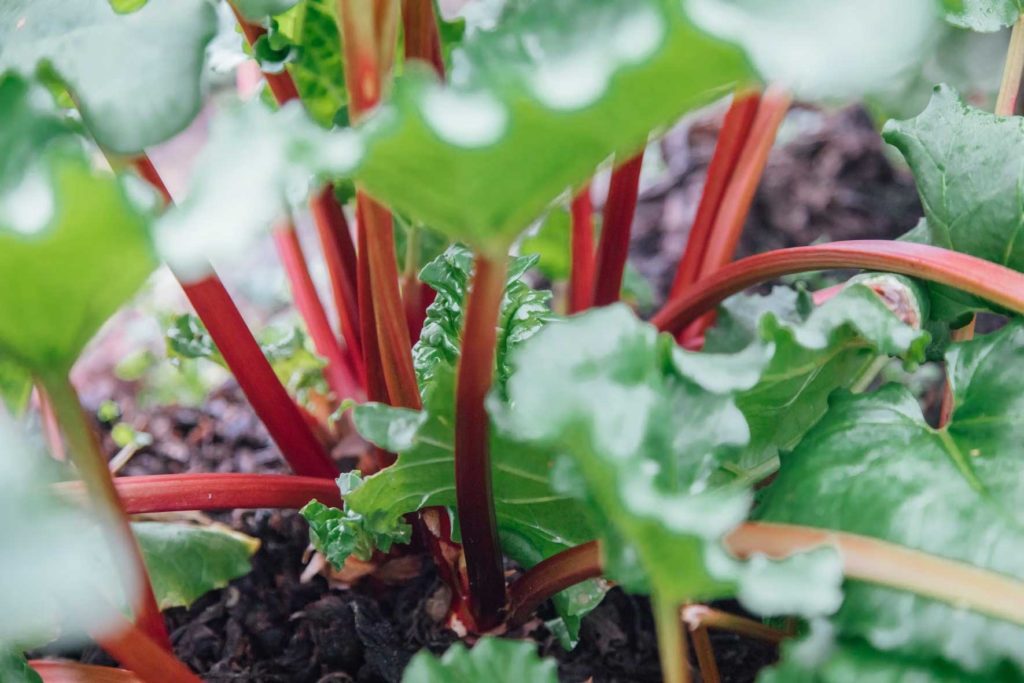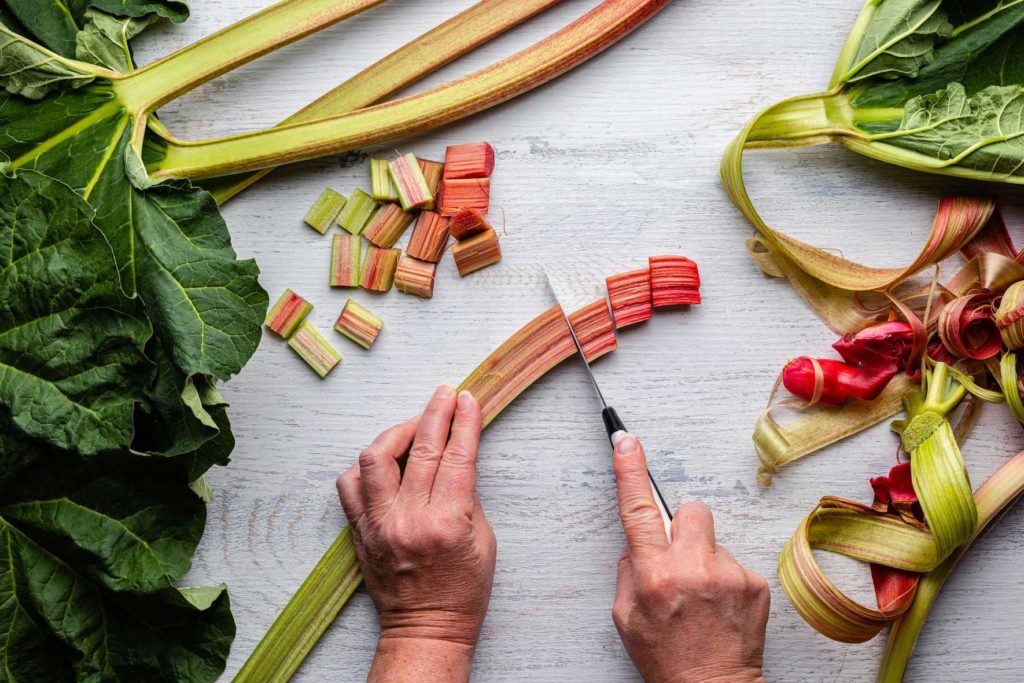
Rhubarb is a herbaceous plant whose tart stems are used in cooking to prepare a variety of desserts such as pies, compotes and jams.
The origin of rhubarb
Rhubarb is a herbaceous plant native to Asia, more specifically to the regions around the Caspian Sea and northern China. It has been cultivated in China for thousands of years, where its roots were used for medicinal purposes. It was then introduced to Europe during the 17th century, where it was cultivated for its edible stems.
Rhubarb was first cultivated in Europe for its medicinal properties, before being recognized for its culinary potential. The roots and leaves contain compounds that have laxative and diuretic properties, and were used to treat digestion and constipation problems.
Over time, rhubarb stems began to be used in cooking for their tart taste and fibrous texture, making them a popular ingredient in desserts such as pies, compotes and jams. Rhubarb is now grown in many countries, including the United States, Canada and Europe.

How to grow rhubarb
Rhubarb is a perennial plant that can be grown in most temperate regions of the world. Here are some steps to follow to grow rhubarb:
Choose a location: Rhubarb prefers a sunny or partially shaded location with fertile, well-drained, slightly acidic soil. It is best to choose a location that is protected from wind.
Planting the roots: Rhubarb roots are usually planted in the fall or spring. Dig a hole about 30 cm deep and wide and add compost or well decomposed manure. Place the roots in the hole, about 5 cm deep, taking care not to damage the buds.
Water regularly: Rhubarb requires an adequate amount of water to grow properly. Water regularly, especially in times of drought.
Maintain the plant: Avoid cutting the rhubarb stems the first year after planting, so that the plant can grow properly. Starting in the second year, you can harvest the stems by cutting the stem near the base with a sharp knife. At the end of the season, cut off all the stems to encourage root growth.
Divide the plant: Rhubarb tends to spread quickly, so it’s important to divide the plant every 3 to 4 years to prevent it from becoming too invasive. To do this, dig up the plant and carefully separate the roots, keeping at least one bud per division. Replant the divisions separately.
When and how to harvest rhubarb
Rhubarb is ready to be harvested when the stems reach a height of about 30 cm and have a diameter of about 2.5 cm. Rhubarb should be harvested in the spring, usually starting in April, and continuing through June.
Here’s how to harvest rhubarb:
Gently pull on the stem: To harvest rhubarb, gently pull on the stem until it comes off the plant. You can also use a sharp knife to cut the stem near the base of the plant.
Avoid harvesting all the stems: It is important not to harvest all the stems from a rhubarb plant. At least half of the stems should be left on the plant to allow the plant to regenerate for the next season.
Remove the leaves: Rhubarb leaves contain oxalic acid, a substance that can be toxic in large quantities. It is therefore important to remove the leaves before preparing the stem. Cut off the leaves at the base of the stem and discard them.
Use harvested stems quickly: Rhubarb stems should be used quickly after harvesting, as they tend to dehydrate quickly. If you don’t plan to use the stalks immediately, you can wrap them in a damp cloth and store them in the refrigerator for a few days.
Cooking Rhubarb
Rhubarb is a versatile ingredient in the kitchen, especially for making desserts. Rhubarb stems have a distinctive tart flavor that pairs well with sugar and spices.
Here are some recipe ideas for using rhubarb in cooking:
Rhubarb Pie: Rhubarb pie is a classic in the kitchen. To make it, simply cut the rhubarb stalks into small pieces and mix them with sugar, flour and spices. Pour the mixture onto a pre-baked pie crust and bake until golden brown.
Rhubarb compote: Rhubarb compote is a quick and easy preparation. To make it, cut the rhubarb stalks into small pieces and cook them with sugar and a little water until they are soft. The compote can be eaten hot or cold.
Rhubarb Crumble: Rhubarb crumble is a simple and delicious dessert. To prepare it, mix rhubarb stalks cut into small pieces with sugar, flour and spices. Pour the mixture into an ovenproof dish and cover with crumble crumbs made with flour, sugar and butter. Bake until crumble is golden and crisp.
Rhubarb Sorbet: Rhubarb sorbet is a light and refreshing alternative to traditional desserts. To make it, cook chopped rhubarb stalks with sugar and water until soft. Blend the mixture until smooth, then place in an ice cream maker and set.
Rhubarb Chutney: Rhubarb chutney is a sweet and tart condiment that goes well with meat dishes or cheeses. To make it, cook chopped rhubarb stalks with onions, sugar, vinegar and spices until the mixture is thick and syrupy.

Nutritional value of rhubarb
Rhubarb is a nutritious and low-calorie vegetable, rich in vitamins, minerals and phytochemicals beneficial to health.
Here is the nutritional value for 100g of raw rhubarb:
Calories: 21 kcal
Carbohydrates: 4.5 g
Fibre: 1.8 g
Protein: 0.9 g
Fat: 0.2 g
Vitamin C: 8 mg (10% of the recommended daily allowance)
Vitamin K: 29 mcg (24% RDA)
Calcium: 86 mg (8.6% RDA)
Potassium: 288 mg (6.1% RDA)
Magnesium: 12 mg (3 % RDA)
Rhubarb is also rich in antioxidants, particularly anthocyanins and phenolic compounds, which can help protect cells from free radical damage. It also contains oxalic acid, which can cause problems for some people with kidney stones, so it’s important to eat rhubarb in moderation if you have this problem.
Rhubarb is a nutritious, low-calorie vegetable, rich in vitamins, minerals and antioxidants. It can help protect cells from free radical damage. However, it also contains oxalic acid, which can cause problems for some people with kidney stones.
–
Experience World Food is your one stop to find your food tour.